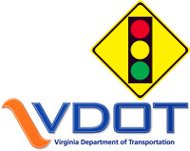Article from: www.thenewspaper.com/news/40/4003.asp
1/18/2013
Virginia Orders Longer Yellow Times at Intersections
Virginia Department of Transportation orders local jurisdictions to use method that would add about half a second to intersection yellow times.
 The consensus is growing that drivers are being shortchanged by the duration of yellow lights at intersections. The Virginia Department of Transportation (VDOT) acknowledged this last week with a directive updating the way yellow times are calculated. On average, motorists will have about 0.5 seconds of additional time to come to a full stop. With the change, Virginia is following the lead of the National Cooperative Highway Research Program (NCHRP) which released a study in October recommending state jurisdictions update their practices to be more consistent with proper engineering principles (view report).
The consensus is growing that drivers are being shortchanged by the duration of yellow lights at intersections. The Virginia Department of Transportation (VDOT) acknowledged this last week with a directive updating the way yellow times are calculated. On average, motorists will have about 0.5 seconds of additional time to come to a full stop. With the change, Virginia is following the lead of the National Cooperative Highway Research Program (NCHRP) which released a study in October recommending state jurisdictions update their practices to be more consistent with proper engineering principles (view report).
The NCHRP study found local traffic engineers tended to deliberately post speed limits far below the actual speed of traffic. They would then use this overly low posted limit in the mathematical equation used to determine how much time drivers need to stop, resulting in an overly short yellow time. The Institute for Transportation Engineers developed its yellow time equation to work with the "85th percentile" speed of traffic, which means measuring how fast at least 85 percent of traffic is moving in free-flow traffic conditions. The new VDOT rules follow the NCHRP recommendation to use the 85th or a higher value for vehicle speed, or "V", in the equation.
"V is the 85th percentile vehicle approach speed as determined under free-flow conditions, if known or as determined by a speed study," the new VDOT rules state. "If the 85th percentile value is not available, the posted speed limit plus 7 MPH should be used as the vehicle speed value."
NCHRP calculated 7 MPH value represented the best approximation of the amount to add to a posted limit so that the speed value reflects reality. J.J. Bahen Jr., a traffic engineer with the National Motorists Association, applauded Virginia's change.
"You no longer have to slam on brakes in Virginia to avoid a red light camera citation.," Bahen told TheNewspaper. "Intersection safety is dependent on the proper timing of traffic signals. The National Motorists Association has been reporting to VDOT that its yellow intervals are too short for several years. VDOT finally listened, and has begun to fix the problem. We commend them, and look forward to working with them on other problems that affect the safety and rights of the motoring public."
Critics of red light camera usage such as the NMA pointed to the issue of short yellows more than a decade ago, but the opinion of the engineering community has only recently caught up. As late as 2009, the Federal Highway Administration still allowed the posted speed limit to be used as a substitute to the preferred 85th percentile speed measurement. The states of Georgia and Ohio each mandate by law one additional second of yellow at any intersection that uses a red light camera.
A copy of the new VDOT standard is available in a 1mb PDF file at the source link below.
Source: Traffic Engineering Memorandum TE-306.1 (Virginia Department of Transportation, 1/7/2013)
Permanent Link for this item
Return to Front Page
 The consensus is growing that drivers are being shortchanged by the duration of yellow lights at intersections. The Virginia Department of Transportation (VDOT) acknowledged this last week with a directive updating the way yellow times are calculated. On average, motorists will have about 0.5 seconds of additional time to come to a full stop. With the change, Virginia is following the lead of the National Cooperative Highway Research Program (NCHRP) which released a study in October recommending state jurisdictions update their practices to be more consistent with proper engineering principles (view report).
The consensus is growing that drivers are being shortchanged by the duration of yellow lights at intersections. The Virginia Department of Transportation (VDOT) acknowledged this last week with a directive updating the way yellow times are calculated. On average, motorists will have about 0.5 seconds of additional time to come to a full stop. With the change, Virginia is following the lead of the National Cooperative Highway Research Program (NCHRP) which released a study in October recommending state jurisdictions update their practices to be more consistent with proper engineering principles (view report).